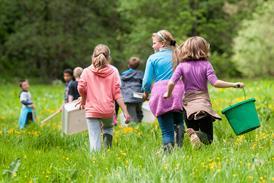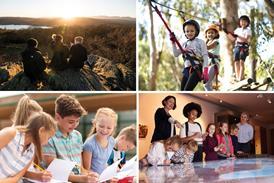.jpg)
Rachel Bailey speaks to learning and interpretation officer Nikki Cherry about the History, English and Science opportunities for Primary school students at Sacrewell Mill in Cambridgeshire.
The mill is part of the William Scott Abbott Trust, which was set up in the sixties to teach people about agriculture, food and farming by giving them a hands-on experience.
Today, a school trip can be tied into various National Curriculum subjects including History, Maths, English and Food Technology.
How long has there been an education department at Sacrewell Mill and what do you do?
“Agricultural education has been at the heart of the William Scott Abbott Trust since it was founded in 1964, and Sacrewell with its 18th century watermill has always been a part of that. The watermill has undergone an £1.8 million restoration [after receiving a donation from the Heritage Lottery Fund in 2013], and the improved resource is a major part of our educational offer.
“We’re happy to plan a visit for any age range, although most of our school visits at the moment are for children at Primary school.”
What does a school trip to Sacrewell Mill involve?
“We offer a guided tour of the watermill to help the children understand how it works. Starting with the huge 1860 waterwheel, which is turned using the water from the mill pond as the power source, we talk about how Victorian technology used renewable energy to turn the cogs and gears which then turn the millstones to grind the grain into flour.
“It’s a great way to teach simple engineering as well as how the crops of wheat in the field go through the mill and how the flour is used to bake our bread. There is a bakery as part of the mill building so the children really get to understand the story of where their food comes from.
.jpg)
What are the main highlights of an educational visit?
“The main highlight is being inside the mill when it’s working. The building feels like it’s alive and you get a real sense of what it must have been like all those years ago. It’s experiential learning at its best.
“The mill is four storeys high, which the children don’t expect and they love climbing the steep steps up to the top. Some of the steps are so steep the children have to come down backwards, which is a novelty.
“They also love pushing an interactive button to hear the story of Jack the apprentice and being in his room imagining what it was like to live and work there.”
Do you offer any tie-ins with the National Curriculum?
“There are many subjects and topics the mill links with. It’s an amazing resource for Science and Technology with the waterwheel, cogs and gears. There is also plenty of Maths involved, like number work and weighing.
“Literacy can also be included via the diary of the miller or the poetry of John Clare, both of which are focused on as part of the interpretation, and of course it’s excellent for a History trip on the Victorians. It also fits perfectly with Sacrewell’s main aim about educating people about food and farming.
“In addition to everything the mill has to offer, we have also the mill house which has been constructed to look like it is set in the 1940s. During World War Two there were land girls living and working at Sacrewell. I have been very fortunate to meet two of these ladies, Edna and Mary, and record their memories from that time.
“The recordings are part of a great resource for anyone learning about this period of history or perhaps for when children have to study significant historical events, people and places in their own locality.”
What resources do you offer to students?
“At the moment the main resource is the experience of being here, the noise of the wheel, the feel of the flour; it’s a feast for the senses. In the future there will be a children’s story book, handling sessions with artefacts and bread making.”
.jpg)
How can a trip to Sacrewell Mill be linked to lessons when the class is back at school?
“Teachers are fantastic at taking an educational visit and using it to support learning back in the classroom. They might make working waterwheels a topic and then teach how water power is used today for hydroelectricity on return to the classroom.
“They could also follow up the theme of baking and make bread or pizza for Food Technology lessons, or write poetry about the rural landscape for English. There are endless possibilities and we’re really happy to work with a school after their visit if it helps.”
What ambitions do you have for the future of educational visits?
“We’re currently working with Brewster Ave Infant School in Peterborough to develop resources for children to use when they visit the mill. We’re also commissioning a children’s story book about the characters in the mill to use with educational groups.
“Ultimately we want the mill to be an educational resource not just for younger children, but for the Secondary sector and for FE students. We will also be offering training to become a miller and hopefully baking classes; the future looks very exciting.”
www.sacrewell.org.uk/watermill-and-heritage









